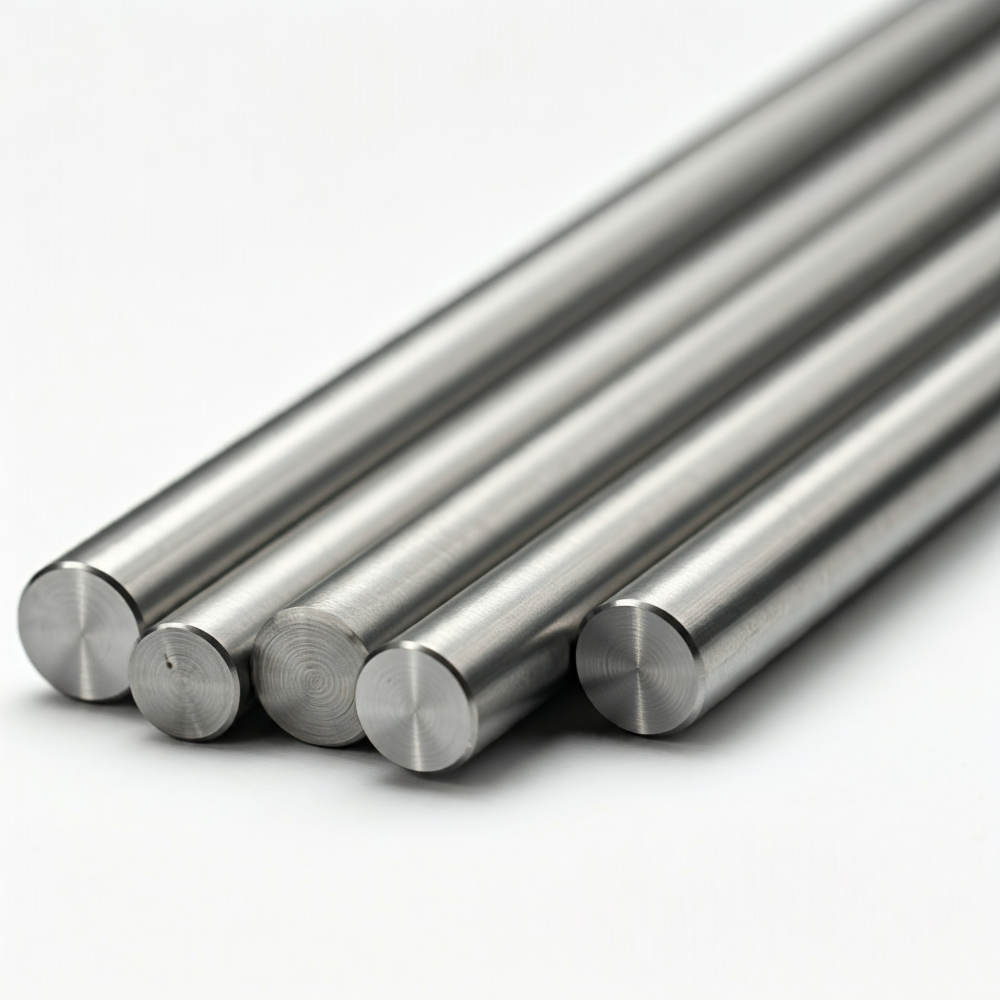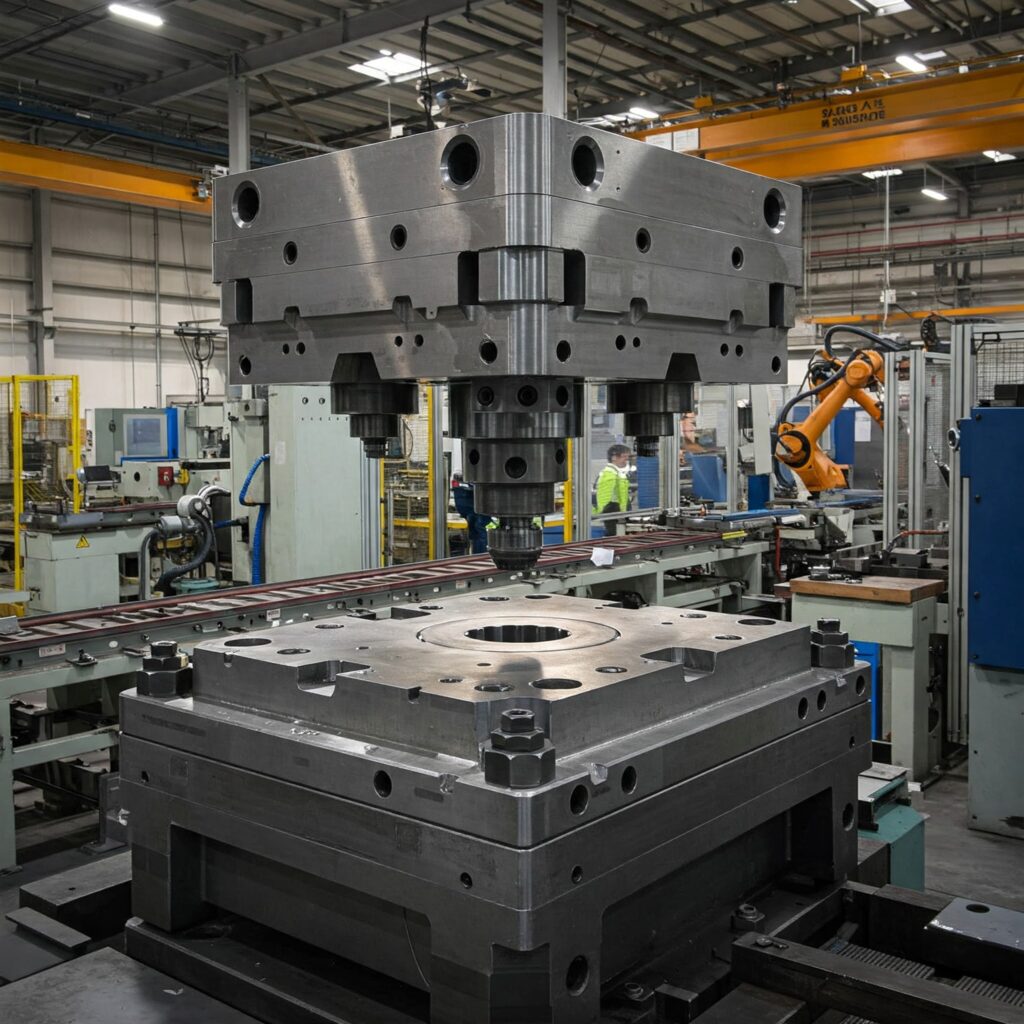Tempo estimado de leitura: 10 minutos
Principais conclusões
- Choosing the right steel, like A2, D2, or D3, is crucial for cold-working tools, balancing wear resistance, toughness, and cost.
- A2 excels in toughness and machinability, while D2 offers a strong balance of wear resistance and toughness, and D3 focuses on maximum wear resistance.
- D2 is the industry benchmark for cold-work tool steels, ideal for mass-production applications, while A2 serves general-purpose needs.
- Heat treatment processes differ, with A2 and D2 using air-hardening for minimal distortion, whereas D3 typically requires oil-hardening.
- Analyzing these steels involves understanding chemical compositions, performance metrics, and specific application scenarios.
Índice
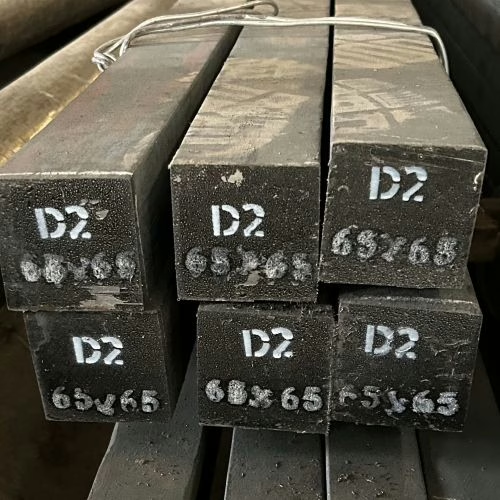
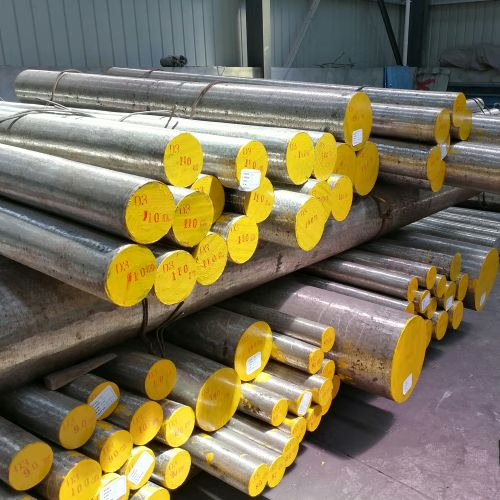
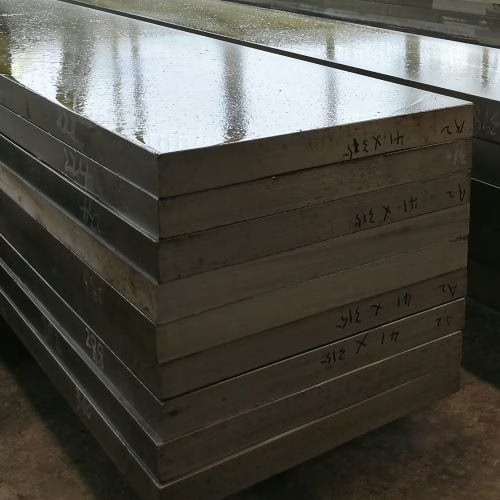
When manufacturing cold-working tools, selecting the right steel is paramount to determining tool life and efficiency. An ideal tool steel must possess high wear resistance, sufficient toughness, and excellent dimensional stability.
A2, D2, e D3 are the three most commonly used and representative grades of steel. Each of these steels represents a distinct “trade-off” in engineering applications. They exhibit different characteristics across three key performance metrics: wear resistance, toughness, and heat treatability.
You cannot find a steel that excels in every aspect. For instance, D-series steels may offer exceptional wear resistance due to their high carbon and chromium content, but this comes at the cost of slightly reduced toughness or more complex heat treatment processes. Conversely, A2 steel may offer superior toughness and simpler heat treatment, yet its wear resistance falls short of that of the former.
Therefore, engineers must thoroughly understand the fundamental differences among these three types of steel—particularly their respective alloy compositions and resulting microstructures—in order to make the optimal choice for specific application scenarios. For instance, do you require a stamping die with extended service life, or a cutting tool with high precision?
AISI Classification Overview: A-Series vs. D-Series
O American Iron and Steel Institute (AISI) categorizes tool steels based on key properties, alloying elements, and hardening methods. A2, D2, and D3 all fall under the broad category of Cold-Work Tool Steels. These steels are specifically designed for applications where operating temperatures do not exceed 205 to 260 °C (400-500 °F) for extended periods or repeatedly.
A-Series The full designation for this series is Air-Hardening, Medium-Alloy, with A2 being the primary representative steel grade. The core characteristic of A-Series steels is their sufficient alloy content, enabling them to achieve full hardness solely through air cooling after austenitization. This air-hardening capability represents their greatest advantage, as it delivers minimum distortion and the lowest risk of cracking during the hardening process.
D-Series The full name of this series is High-Carbon, High-Chromium, encompassing steel grades such as D2, D3, D4, and D7. Their most distinctive feature is their chemical composition: containing high carbon content ranging from 1.50% to 2.35%, along with approximately 12% Chromium (Cr). Originally developed for high-speed cutting applications, D-Series steels are now extensively used as cold-work die steels.
Comparative Analysis: D2 vs D3 vs A2
1. Wear Resistance and Carbide Content
The significant differences in performance between A2, D2, and D3 steels stem fundamentally from their differing chemical composition, particularly the levels of carbon and chromium. These two elements directly determine the quantity and type of carbide formation within the steel, which in turn dictates their final microstructure.
The wear resistance of tool steel primarily depends on two factors: first, the steel’s inherent matrix hardness; second, the presence of hard, undissolved carbides within the steel—the quantity, type, size, and distribution of these carbides are critical.
Based on this principle, we can compare these three types of steel as follows:
- A2 is a general-purpose cold-work steel. It is typically rated at 6 points on the wear resistance scale (1-9 scale), lower than the D series. This is due to its relatively moderate alloy content: approximately 1.0% carbon and 5.0-5.25% chromium. Because of the lower alloy content, the amount of undissolved carbides formed internally is correspondingly lower.
- D2 is often used as an industry benchmark for measuring abrasion resistance. It contains high carbon and high chromium, along with molybdenum and vanadium. This combination of elements promotes the formation of numerous chromium-rich, extremely hard M7C3 carbides within the steel. D2 possesses a high abrasion resistance rating, typically rated at 8.
- D3 steel pursues ultimate wear resistance. Its higher carbon content compared to D2 allows it to form a greater quantity of hard carbides. Consequently, D3 achieves superior wear resistance. However, this performance enhancement comes at a cost: D3 exhibits relatively lower toughness and is more brittle than D2. It is the ideal choice for purely wear-resistant applications.
2. Toughness and Durability
Toughness is defined as the ability of tool steel to resist chipping and breaking. Typically, as carbon and alloy content increase, the toughness of tool steel decreases.
- A2 offers better toughness and ductility than the high-alloy D-series wear-resistant steels. It provides a good balance of various properties, particularly compared to D2, which often sacrifices toughness in pursuit of wear resistance. A2’s toughness rating is medium-high, typically scoring 4 or 5.
- D2 is moderately tough. Although its toughness is significantly lower than A2, D2 typically achieves a favorable balance between “toughness” and “high wear resistance,” making it highly suitable for many metal-forming operations. D2’s toughness rating is generally 2. When fractured in tensile testing, D2 cold-work tool steel exhibits a distinctive flat-surface fracture mode, indicating its brittle nature. Unlike some low-carbon steels, it shows no signs of necking prior to fracture.
- D3 has the lowest toughness. D3 contains massive amounts of carbides, making it highly prone to edge brittleness. Its inherent toughness is also lower than D2. To achieve its exceptional wear resistance, D3 sacrifices impact resistance and toughness significantly.
3. Hardenability, Heat Treatment, and Dimensional Stability
The choice of quenching medium and the associated dimensional changes are critical manufacturing considerations.
| Grau | Hardening Medium | Distortion/Movement | Hardening Temperature (Approx.) | Note |
| A2 | Endurecimento ao ar | Low distortion; expansion approx. 0.001 in./in. | 950–1000 °C (1740–1830 °F) | Excellent safety in hardening. |
| D2 | Endurecimento ao ar | Minimum distortion; movement approx. 0.0005 in./in. | 1010–1024 °C (1850–1875 °F) | Deep hardening with high hardenability, good for gas quenching. |
| D3 | Oil-hardening (typically) | Higher susceptibility to distortion and cracking | 960 °C (1760 °F) | Limited hardenability; requires liquid quenching (oil) unless air quenched with hardness sacrifice. |
Both A2 and D2 fall under the category of “air-hardening steel.” Air hardening is a relatively mild quenching method that maximizes the reduction of internal stresses during the hardening process, resulting in minimal dimensional distortion and the lowest risk of cracking. In this regard, D2 even slightly outperforms A2, exhibiting superior dimensional stability.
However, D3 steel is an exception within the D series, as it typically requires “oil quenching” to achieve the desired hardness. Compared to air cooling, oil cooling (liquid quenching) is a more aggressive cooling process. This makes D3 steel significantly more prone to deformation or cracking during heat treatment, especially for D3 steel workpieces with complex geometries.
Nevertheless, the D3 process has its own unique characteristics. It employs a relatively low quenching temperature, and this lower temperature, combined with liquid quenching, actually helps minimize surface decarburization and scaling. Consequently, tools manufactured from D3 achieve a superior surface finish after heat treatment.
4. Machinability and Cost
When selecting tool steel, machinability and cost are two closely related and critical considerations.
The substantial alloy elements added to tool steel to achieve high wear resistance often make machining more difficult. D2 and D3 are prime examples. A2 has a machinability rating of approximately 60 (with 1% carbon steel as the 100 benchmark), making it a tool steel considered relatively easy to machine. D2 (after proper annealing) has a rating of only 45, with its machinability regarded as particularly poor. Meanwhile, D3 and other D-type steels with higher carbon content, such as D4 and D7, are even more difficult to machine than D2.
In terms of cost-effectiveness, D2’s global popularity stems from its exceptional balance between performance and cost. It delivers outstanding performance while containing relatively low levels of expensive alloying elements like molybdenum (Mo) and vanadium (V), thereby controlling material costs.
D3 also offers cost advantages due to its lower Mo and V content. Additionally, its required heat treatment temperatures are lower, resulting in simpler and more cost-effective heat treatment processes. This makes it highly suitable for applications like blanking and cutting.
A2 steel is often priced lower than D2 steel. For further information on this topic, please get in touch with us. sales@aobosteel.com
5. Hardness
After quenching, the final hardness (HRC) changes with tempering temperature1.
Tempering Data for A2, D2, and D3 (Hardness in HRC after tempering 2 x 2 h)
| ASTM | DIN | Endurecimento | As Quench | 200°C (400°F) | 250°C (480°F) | 300°C (570°F) | 500°C (930°F) | 550°C (1020°F) | 600°C (1110°F) |
| A2 | 1.2363 | 950°C (1640°F) | 64 | 61 | 59 | 58 | 57 | 53 | 45 |
| D2 | 1.2379 | 1020°C (1870°F) | 63 | 61 | 59 | 58 | 59 | 54 | na |
| D3 | 1.2436 | 960°C (1750°F) | 65 | 62 | 60 | 59 | 56 | 51 | 44 |
Applications and Selection Guidelines: D2 vs D3 vs A2
When choosing between A2, D2, and D3, the key lies in balancing the requirements of two dimensions: first, performance requirements, specifically the trade-off between wear resistance and toughness; second, manufacturing costs, including control of heat treatment distortion, machinability, and material price.
AISI D2: The Long-Run Benchmark
D2 is the most popular and widely used grade among all high-carbon, high-chromium cold-work tool steels. It is even recognized as the most important reference standard for evaluating the performance of all cold-work tool steels.
D2 offers an ideal combination of “high wear resistance” and “moderate toughness,” while also possessing air-hardening properties with minimal distortion after heat treatment.
D2 steel is typically the preferred choice for mass-production blanking and long-run dies. D2 finds extensive applications, including dies for blanking, forming, thread rolling, and deep drawing, as well as trimming tools, punches, shear knives, slitter knives, and rolls.
AISI A2: The General-Purpose Workhorse
AISI A2 is the general-purpose workhorse. It is a tool steel with excellent properties, relatively easy machining, and extremely broad applications, making it highly suitable for medium-volume production tasks with output levels of around thousands of parts.
The advantage of A2 lies in its toughness and ductility, which are superior to those of D2 and D3. It boasts excellent market availability and is easy to machine.
AISI D3: Maximum Abrasion Resistance
D3 is selected only when the user requires maximum abrasive wear resistance. It is also used for long-cycle blanking, cutting, and stamping operations with low risk of shock loading. D3 is highly susceptible to cracking and deformation during heat treatment, making it generally unsuitable for tools with complex geometries. If users require high wear resistance while avoiding D3’s heat-treatment risks, they typically prefer D2 or directly upgrade to high-speed steel (HSS) or powder-metallurgy steel.
In summary, D2 offers the best overall balance between high wear resistance, acceptable toughness, and excellent dimensional stability. A2 sacrifices some wear resistance in exchange for “superior toughness” and “machinability”. D3 delivers the highest wear resistance, but at the expense of toughness and heat treatment safety.
Links relacionados
- Rafael A. Mesquita, Aços para ferramentas: propriedades e desempenho (Boca Raton, FL: CRC Press, 2013), 150. ↩︎

